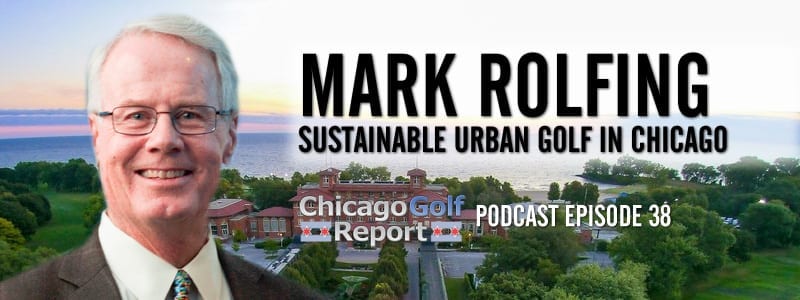
 NBC Golf Channel commentator Mark Rolfing is a Chicago native and the founder of the Chicago Parks Golf Alliance. He’s also spearheading the effort to renovate and rejuvenate South Shore and Jackson Park courses in connection with the upcoming Obama Presidential Library. In this interview, we talk with Mark about his Chicago roots, his career in golf broadcasting, the Chicago Parks Golf Alliance and much more, including…
NBC Golf Channel commentator Mark Rolfing is a Chicago native and the founder of the Chicago Parks Golf Alliance. He’s also spearheading the effort to renovate and rejuvenate South Shore and Jackson Park courses in connection with the upcoming Obama Presidential Library. In this interview, we talk with Mark about his Chicago roots, his career in golf broadcasting, the Chicago Parks Golf Alliance and much more, including…
- The future Vice President of the United States who was his college roommate
- How he found himself in Hawaii after growing up in DeKalb
- How he became the first “common man” golfer announcer before David Feherty and Gary McCord
- The phone call President Obama made to convince Tiger Woods to come to Chicago
- Why Chicago is America’s greatest golf town
- How his fight with stage four salivary gland cancer opened his eyes to an incredible opportunity in Chicago
- Why the Chicago Parks Golf Alliance received the blessing of Mayor Emanuel
- The groundbreaking new model in Chicago that could be the future of sustainable urban golf
- What Tiger asked him 10 times during a trip to Chicago
- The plan to start creating some jobs not years from now, but right now
- His goal of bringing a BMW Championship and someday a President’s Cup to Chicago’s lakefront
- How Tiger Woods and the Chicago Parks Golf Alliance plan to build one of the greatest urban courses in America
- Why the Jackson Park and South Shore restoration may be the first of many golf rejuvenation projects for the Chicago Parks Golf Alliance
- The plan to make the restoration inclusive and affordable for everybody in the community
- Mark’s favorite private and public golf courses in Chicagoland
Interviewer: Walter Lis. Running Time: 43:51
CHICAGO GOLF REPORT: So I think most of our readers obviously know you from your broadcasting career, can you give a little bit of a background on your connection to Chicago, and how you got started in the golf business?
MARK ROLFING: I was born and raised in Chicago. I was actually born in Evanston, but spent most of my life, my younger life out in DeKalb, went to high school out there, all the way through high school. And then went to college at a little school down in Greencastle, Indiana, DePauw University. So all through my early days I was a sort of a real midwest guy.
I was a Cubs fan of all-time back when we were losing most of the games. But my Chicago roots have never left me, and when I got into my second year at college my golf game started improving dramatically. Instead of heading in the direction I was headed career wise, I ended up turning pro right after I graduated from DePauw, and off I went to become the next Jack Nicklaus, which didn’t happen.
My college roommate in DePauw, actually he was two years older than me, but who was kind of like my mentor, was a guy called Dan Quayle, who became the Vice President of the United States. I majored in political science, actually and I have a degree in political science, and basically use that degree to play golf professionally. Now being a golf announcer, there is not much of a connection there. That’s kind of where I grew up. I actually have a Master’s degree from Northern Illinois University.
I have a lot of Chicago ties and I played all my junior golf in Chicago. I did the Western Amateur, all that kind of stuff.
CHICAGO GOLF REPORT: You said something there that I don’t hear very often and I don’t think many golfers hear very often, which is my golf improved dramatically. Can you tell us what happened during that period when you saw this dramatic improvement? What came together that helped it along?
MARK ROLFING: I’m not sure what it was. I was pretty good in high school. I was the number one player in high school, and the number one player in the region. But I was not by any means Division I college material. I think maybe it could have been possible in my senior year, but something happened in college, and it wasn’t because of instruction so much. I think it was just me maturing as a player.
I won a college tournament, and right after I won my first one, things really changed. I kind of got a lot of confidence, and then I started getting pretty serious about the game, and started getting some good instruction. By the time I graduated college I felt like I was good enough to compete professionally. And I decided I was going to give it a crack. I played pretty much full time for the better part of three years.
I went to two PGA Tour qualifying school’s but never made it through either one, so I ended up playing mostly international. I played the European Tour two years, Asian Tour one year, a lot of mini tours and ended the third year pretty much knowing that I wasn’t PGA Tour material.
CHICAGO GOLF REPORT: Can you explain to us then where did the connection between you and Hawaii come from? Was it to accept a job in Hawaii, how did you go from here to Hawaii?
MARK ROLFING: I had met a girl that I really liked out in California that I had started seeing, and played in the Hawaiian Open that year, which was in February. That was February 1975. I decided that I kind of liked Hawaii and met this gal and said to her one day, “let’s go out to Hawaii.” Do you want to go out there for a week and have some fun, and I’ve got to figure out what I’ve got to do with my life.
It was right after the qualifying school in December ‘75, where I missed qualifying again for the second time. So no PGA Tour card, and the prospect was that I would go back to Asia and Europe again, and I just decided I kind of wasn’t good enough, basically.
So we went out there and just for some reason I ended up on Maui, and this new resort, Kapalua was being developed. There was nothing there, and I did my usual sort of snooping around looking at things, played golf there and the next thing you know I had taken a job. And my first job there was in the car park, washing golf carts.
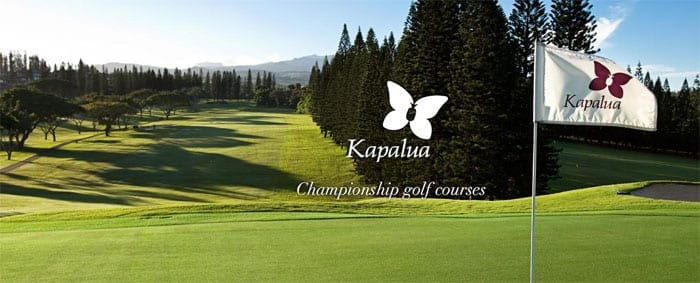 And she loved the place and she took a job cocktailing down at the Sheraton Maui, and we just decided that that was the place we were going to stay for a little while. Our relationship was really good and so off I went and started washing golf carts and pretty soon became the assistant pro and sort of moved up through the organization. I spent a better part of eight years doing various things at Kapalua Resort on Maui.
And she loved the place and she took a job cocktailing down at the Sheraton Maui, and we just decided that that was the place we were going to stay for a little while. Our relationship was really good and so off I went and started washing golf carts and pretty soon became the assistant pro and sort of moved up through the organization. I spent a better part of eight years doing various things at Kapalua Resort on Maui.
I was still playing a lot of golf. I was still a pro. I won some tournaments out there and I really wasn’t competitive, but my game was still in a good enough shape that I was able to play pretty well at a fairly high level. Then the big break for me came in 1985, when I won a car in the Kapalua Tournament, which was a post-season tournament at the time that I played in every year.
I got taken up to the 18th tower for an interview, and Lee Trevino was the analyst and I kind of sat in with those guys. After the show was over, the producer asked me to come back the next day. That was on a Friday, so I sort of ended up going back to the tower all three days – Friday, Saturday, and Sunday in Kapalua. That was the 1985 tournament, so that was nine years after I had gone out there.
They offered me a job to audition as an announcer the following week at the World Cup in Palm Springs on ESPN and off I went.
CHICAGO GOLF REPORT: We’re hearing a theme here. I guess with your career you are the type of person that goes out and kind of seeks things out, and subsequently attracts a lot of opportunity. Would you say that is how your broadcasting career has evolved as you matured?
MARK ROLFING: Yeah, I would say yes. You’re quite perceptive there. I see opportunities and I got some great breaks at the time. The thing you have to remember back then there was no David Feherty, there was no Gary McCord. The golf analysts on television were basically only the guys that had won major championships. It was Ken Venturi on CBS and Trevino and Jack Nicklaus was doing some work at ABC. But if you haven’t won a major you had no chance really.
The week after the Kapalua event I went to Palm Springs and auditioned at the World Cup as an on-course commentator and basically, they hired me on the spot. My first full year at ESPN and first year of broadcasting was 1986.
I worked two years at ESPN, and half way through the second year, NBC offered me a job. And I sort of became the common man golfer announcer and I still hadn’t won any major championships or any PGA Tour events or anything like that.
So yeah, there was an opportunity and I had a lot of good breaks and kind of was in the right place at the right time.
CHICAGO GOLF REPORT: That makes a perfect segue into the topic of the Chicago Parks Golf Alliance, because it combines having the vision to potentially take these two courses and merge them into one “super course”. And just as you talked about the element of the common man, having actual golfers who play those courses on a daily basis be involved as well as potentially the PGA Tour. Can you talk a little bit about how the idea of this project came about, and maybe even take a step back further, what is the Chicago Parks Golf Alliance?
MARK ROLFING: Basically, I was away from Chicago, although I came back to Chicago regularly and still love the summer more than any place in America probably, except for Pebble Beach and places like that.
But I came back in 2012 for the Ryder Cup in Medinah and I did a series of the “Road to the Ryder Cup” preview shows about the Ryder Cup, and that’s when I fell in love with golf in Chicago again.
That was 2011 and I spent a lot of time getting re-engaged in the Chicago golf scene. Even to the point where I did a couple of specials on NBC and started to remember how much I loved golf in Chicago and really I started thinking again, Chicago is Americas greatest golf town, and I literally fell in love with Chicago golf again.
We did a couple of big initiatives in and around the Ryder Cup, and for the next couple of years after that I started spending more time of just looking around Chicago and seeing what I thought that it may or may not be the possibility there because I worked basically on the mainland and live in Hawaii and I needed a base. And I found myself going to Chicago quite a bit in and out, easy to get in and out of and centrally located.
And then the thing that happened was that I met some of the folks from the Chicago Park District and started having conversations about sort of the core of Chicago golf, which became apparent to me that the core that the golf courses really in the core of the city were not you know, up to the caliber of the suburban golf courses. And Chicago’s golf reputation primarily had then and was continuing to be built on suburban golf.
Thirteen US Opens in Chicago and 8 different courses and all of them are in the outer Chicagoland area. And I started thinking is there a way to rejuvenate, polish, renovate, restore, or whatever the core of Chicago golf? I didn’t see it. I couldn’t see it for a couple of years.
Then I got a really bad cancer, got a really tough one in of August 2015 and it was a week before the PGA Championship at Whistling Straits. It was a stage four salivary gland cancer, and the tumor was removed at the University of Chicago. During my recovery period I found myself at Jackson Park, which is right next door. It was really during the summer of 2015 when I became totally engaged in thinking there is a tremendous opportunity in Chicago. And the one I was seeing right in front of my very eyes was Jackson Park and South Shore.
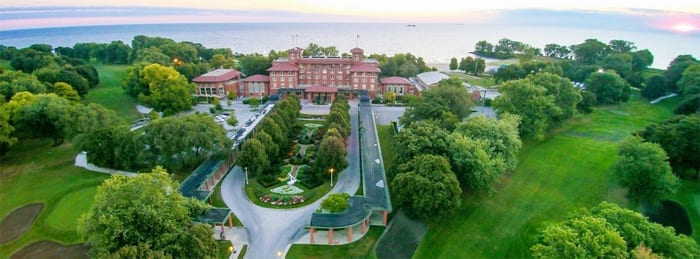 Here I found these two courses that were both over 100 years old, totally underutilized. It was in the summer time and I couldn’t figure out where all the kids were. How come these courses weren’t all just packed with kids? I started seeing an opportunity, and that opportunity then grew. And I began talking with people about it, not only in the Chicago area, but all around the world of golf and saying wow, I’m seeing an opportunity in Chicago that really intrigues me.
Here I found these two courses that were both over 100 years old, totally underutilized. It was in the summer time and I couldn’t figure out where all the kids were. How come these courses weren’t all just packed with kids? I started seeing an opportunity, and that opportunity then grew. And I began talking with people about it, not only in the Chicago area, but all around the world of golf and saying wow, I’m seeing an opportunity in Chicago that really intrigues me.
I love the town and then the opportunity grew even bigger when the Obama Library Presidential Center decided that they were going to go in that location at Cornell just adjacent to Jackson Park. That was really the thing that pushed me over the edge to say, “you know what, this area could really use some rejuvenation when it comes to golf.”
I think that that could be a game-changer, not only for that part of the community, but for the future of urban golf. There is a way to create a model here for the future of sustainable urban golf. That was the mission that I sort of created for myself. And I spent the last couple of years as the cheerleader of the project.
Which is basically what I do, part of my greatest strength is getting people together. When I see an opportunity or a mission and what I saw here I thought was a really, really good one. I thought there was a chance to do something that would really change the game. And at my stage of my career right now, that’s the only thing that would interest me in a project. This could really be a game changer, and this became it.
CHICAGO GOLF REPORT: It really does make sense, as far as the Mark Rolfing journey, that here you are faced with your greatest adversity, and then you see this opportunity that could change your life. As you said, it could be a huge game changer for the City of Chicago, and of golf. At what point, then, did you start to push the project forward, and make the connection with the Presidential Library? Was it when you started to talk with you know the City and get the Mayor involved?
MARK ROLFING: I first talked with the Mayor about it in May 2016, so that hasn’t even been a year now. And it was clear to me that he felt like there was an opportunity here. He’s not really a golfer, but he was interested. He had pointed out to me that there was no real sort of central Chicago golf organization, or one person that was kind of a face of Chicago golf. Because I kept asking, why hasn’t this been done before? Or why isn’t there some organization here, that has as its mission in rejuvenating Chicago golf?
And nobody really had the answer to that. The Western Golf Association is one of the most iconic golf associations in the world. But their mission is totally different. Their mission is not rejuvenating Chicago golf, so there was a big void there. And I think I was at the right place at the right time, and the stars aligned and the Mayor kind of said go do it, you’re my kind of guy. You’re my golf guy. Figure it out.
There were two key elements really that had to come into play, well, three of them. But the first one was already done, and that was President Obama and the Presidential Center. Once that move was announced to be at Jackson Park and the number-one goal was ticked off a list of three things I had to do.
The second thing was I had to figure out was if there was a way to have an event, or an anchor, marketing, branding sort of feel to have what we were doing. Because I didn’t feel like all of a sudden, we could just go to Jackson Park and South Shore and say we were going to really make this place great, and it’s going to make a difference without having some anchor to it.
When the Western Golf Association agreed to become a partner, and they agreed once the right thing was done there, that we could have ourselves a tournament someday. It really was a game changer, because I’ve always felt like it’s unbelievable to me that Chicago doesn’t have a permanent PGA tournament anymore. We have a playoff event every other year. But I’m just old enough for the Western Open, which was all the way back when rotated and when it was one of the top five golf tournaments in the world really.
The partnership with the Western Golf Association, when they said, hey, we can come together and do this thing right. The event can sort of be the hub, the anchor of our whole initiative. That really change things for me.
And then Tiger. There we were, and everybody said, we want to do this, we want to do this, but how are we going to do it? I had talked to a number of people I had worked with over the years, and had a number of different people look at the property and look at what the opportunities were. Starting with Ben Crenshaw, who is really the only guy, Coore and Crenshaw, that I’ve been involved in golf course development.
I was obviously involved with them out in Kapalua on Maui, which was their first course. And then I was involved as one of the founding guys at Sand Hills in Nebraska after that. So probably in my mind I thought it was likely, that Crenshaw would be involved if I was going to be the sort of organizer of this thing.
But the real thing that changed everything was the day that the President of United States called up Tiger Woods, and said, hey Tiger, there’s an initiative going on in Chicago with the Presidential Center and talk about the golf courses being renovated and they are going to be on the front yard of the Presidential Center. And I love golf, and I’m going to move back there someday and you should get involved. That one really changed things. Tiger ended up coming to Chicago, and that would have been in August of last year. Not very long ago, and we spent a day.
I certainly didn’t think that Tiger was going to walk in there and say this is the greatest opportunity that I’ve ever seen. I think I probably believed that he was going to say this is too complicated, or this is going to take too long.
But in one day it became clear to me that Tiger saw the same opportunity that I had seen, which was where are all the kids? He must have said to me 10 times that where are all the kids? I think that was maybe August 11, it was a beautiful summer day in Chicago. And there are no kids out there playing golf.
We spent that day and looked at the courses and talked about the physical constraints and roads and how do you get from South Shore to Jackson. I think he had a little bit of a concern about some of those logistics. But more than anything, he talked about kids and what could we do.
He became engaged, at least in his mind, that day with the initiative. And that is this is an opportunity to change the neighborhood, I believe, and change the way golf, going forward in a lot of urban areas can be a driving force in education, jobs, just a lot of things. Once he got in his mind committed to it and saying, I really want to do this, we can make a difference here in Chicago, I then had the President of the United States and Tiger Woods, that’s a pretty good start. So that’s sort of how it happened.
CHICAGO GOLF REPORT: You have mentioned several different audiences that this project serves. Obviously, the kids, your local golfers, it’s the connection to the city. Like you said, they don’t really have a Chicago-based anything that we can say as the base of golf in Chicago. The connection with the library. At what point in time did you start to think that this could be a possibility? Was it when all these things started building up, or you talked about the linchpin being when Tiger joined in?
MARK ROLFING: At that point, he’s going to kill me, but I’m going to tell you anyway. That point came the day that Mike Keiser went to South Shore. Pretty early on, I would say maybe two years ago, I went and saw Mike Keiser, who was one of the founding guys with me at Sand Hills that I had known for years and who has obviously done a lot of work with Ben Crenshaw and Bill Coore. But I went and saw Mike, told him what I was thinking about, South Shore and Jackson. This was right after my cancer.
And he said Mark, you’re dreaming. It’s a beautiful vision. He said there will be so many roadblocks, he said I’m giving you a one out of 100 chance to get this thing together. And I said okay, he kind of said come back and see me when you’ve got something. He said if anybody can do it, you can do it, but you’re just going to run into all kinds of roadblocks.
So Mike and I continue to talk for about a year, and this was before Tiger, and this was before the library making the decision. Really, this was before anything material happening. And as we started getting people interested and people looking and saying wow, maybe you can do this or maybe, maybe you can do that. And then one day he said you know, I’ve got to hand it to you. I’m giving this a 50/50 chance now and I want to go down and look at it.
That would have been last fall early fall. Anyway, he went down there and saw physically what the opportunities were. I don’t know if he had ever been on South Shore, or even seen the cultural center, I guess maybe he had, but he left that visit being very enthused, and saying, I think this can work. You can’t compromise, you’ve got to do it right, beginning to end. And the programs that you create are going to be just as important as the golf holes themselves.
Caddies, he talked a lot about, why don’t we get kids involved in caddying and get the Western Golf Association involved and start creating some jobs right away. Not for years from now, but right now. And let’s just start to rejuvenate things now. He said if we do that, he told me he would be willing to sort of take on a role in fundraising, because what we discussed was how can we create a model here, where the money used to renovate the golf is not taxpayer money, but is private money so that there’s no real true cost associated with the golf that would then cause them to have to charge green fees people couldn’t afford.
Mike and subsequently a few other people that are close to him helped me create basically the model that we are now going to use, which was the formation of the 501C3, and basically bring in private money to fund the restoration of the golf course, so it’s not the people’s money. But at the end, the people are going to own the course.
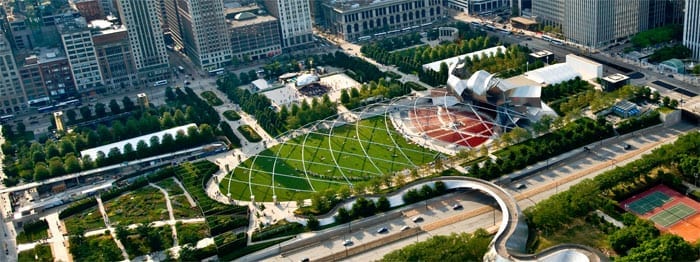 It’s never been done that I know in golf. It happens regularly in city parks. It’s a lot like Millennium Park and Mike was one of the founding donors at Millennium Park. So that model is private money that went into building a park for all the people to enjoy. We’re emulating that model in some ways now.
It’s never been done that I know in golf. It happens regularly in city parks. It’s a lot like Millennium Park and Mike was one of the founding donors at Millennium Park. So that model is private money that went into building a park for all the people to enjoy. We’re emulating that model in some ways now.
The private money is restoring these golf courses for the golf community, and hopefully that golf community gets bigger and bigger and more and more people, and kids and all the things that I talked to you about. But it’s a pretty cool model if it works, and I think it will now that there is private money building it, yet the people in the end own it.
CHICAGO GOLF REPORT: I’ve got two final questions. Number one, five years from now, if everything would roll out like you would like it to see, what would you envision for this project? What are the kind of impacts that you see this project could have on the city and golf, and in the community?
MARK ROLFING: I would first see a rejuvenated interest in the game with the kids where there’s a First Tee component, there’s a short course component, where that we are addressing all the issues that golf has right now. There are three main challenges anywhere in the game, regardless of whether it’s downtown Chicago or the middle of Nebraska – the game is too expensive, it takes too long, and it’s too difficult.
How we deal with all three of these and every decision that we make in Chicago, literally has these components in mind. I see programs this summer, starting at Jackson Park that have never been done. Kids play free. Are they going to be able to play free this summer? Probably not, but when this opens, four years from now and it’s totally restored, the goal is that kids under the age of 17 get to play free. And we want to introduce them to the game because I think there’s so much that can happen in and around that. And if you do that then the parents become engaged, and pretty soon the neighborhood really starts looking at this as their pride and joy.
This is going to be such a tremendous boost to the area, and I think it will create in the parameters of the golf course lots of opportunities for that whole area to change. I think golf can do it. I’ve seen it done in Atlanta. I’ve seen it done in other places, and it just hasn’t happened in Chicago, because nobody has been able to find the right mix to take advantage of an opportunity.
I got lucky here, and the stars sort of all aligned and I see five years from now, the BMW Championship being played at this golf course, whatever we decide the name of it is. Maybe someday a Presidents Cup. Who knows.
Physically, it’s got all the qualities of a championship course. There is plenty of room to build one of the greatest urban courses in America. I’m totally convinced we can do that. Because of the size of the Park District in their role and the community, you don’t have to build any tournament infrastructure. But within the golf courses themselves, they get parking all over the place.
I see the tournament as being a big anchor that everybody is going to look forward to four or five years from now when it’s done. But in the meantime, I see a starting First Tee initiative there, getting the high school teams in the area back to playing Jackson Park, and not traveling 45 minutes, with parents taking their kids out up to Glenwood all the time.
Nothing is going to change physically at Jackson Park this summer, but I hope culturally it does change, and the people start to realize what a restoration like this can do. I spent a lot of time in the community over the last couple of years, and talked to a lot of people and I think they’re seeing it.
We are not taking parkland and building golf courses. The golf courses are already there and we are not going outside of the envelope of what’s already existing at all. But the benefits that are going to be provided to this city, like they are going to be able to go across Lake Shore Drive by going through a tunnel there that connects to the courses. They have difficulty getting out to that beach now.
I think the lakefront is going to get restored as part of this, which needs to happen anyway. But most importantly, these courses are both over 100 years old and really haven’t had that much capital improvement over that time. This would have to be done anyway, otherwise they would decay and eventually not be feasible.
CHICAGO GOLF REPORT: This is probably the most exciting project we’ve had here in a very long time. And let’s end with a question, then, and this might be your most difficult question to answer. What are your favorite courses in the Chicagoland area, both private and public?
MARK ROLFING: My favorite courses are whichever one I’m going to play next. I’ve always loved public golf. I don’t know why. I’ve played most of my junior golf and amateur golf in Chicago, at the great clubs that have the championship courses, the Olympia Fields, the Medinah, those kind of places. I love Butler National, maybe the greatest test in Chicago. Medinah number Three, and obviously, the great Olympia Fields.
But then, if you sort of go from that level down, my favorite courses in the Chicago area were always the ones sort of like Shore Acres. I’m more of a north side guy, so I really like for example, some of the courses that have been restored like Onwentsia. I love at what they did at Onwentsia, which is a lot like what you saw happen at Oakmont where they’re kind of going back to the original design. There’s been a lot of removal of trees that were either dead or dying, and opening up areas to allow the turf to grow so they can get sun to it.
I love kind of some of the smaller, really good quality courses. I put Shore Acres and Onwentsia in that. But, when I really think about it, my greatest golf memories in Chicago in some ways are from Waveland.
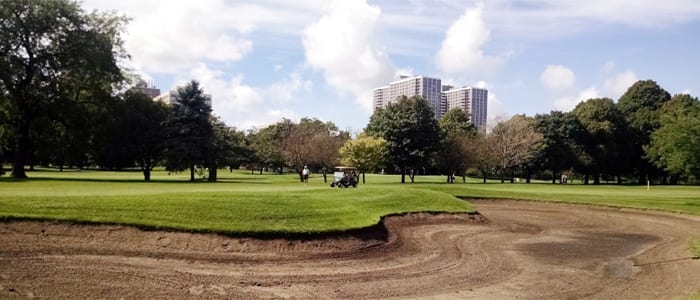 I can’t figure out why we call it Sydney R. Marovitz golf course now, but I love that place and I still do. And I think someday, not in the too distant future, that will be part of this whole Chicago golf restoration. I don’t think this restoration and rejuvenation is going to be just simply confined to South Shore and Jackson Park. I think it will have way more legs and tentacles for that.
I can’t figure out why we call it Sydney R. Marovitz golf course now, but I love that place and I still do. And I think someday, not in the too distant future, that will be part of this whole Chicago golf restoration. I don’t think this restoration and rejuvenation is going to be just simply confined to South Shore and Jackson Park. I think it will have way more legs and tentacles for that.
Now people want to see projects that work, they don’t want to see pie in the sky stuff. But, as we start accumulating folks around town who are really interested in the golf, and not just the Mike Keiser’s of the world. We’ve got so many people in the community down in Hyde Park and in those areas, that really are now saying, hey, this is a great idea. We want to get behind this.
I think what you’re going to see is sort of the rejuvenation of Chicago golf, starting at the core, which is the Park District courses and working its way all the way out to you know, the far suburbs. But the core of the city is what I’m looking at right now.
CHICAGO GOLF REPORT: This has been great. Mark, I really appreciate the time and I think we’ve covered so much here.
MARK ROLFING: Well we should be doing this on a regular basis. I think I gave you hopefully enough of the history. But I think you can see what’s happened here.
CHICAGO GOLF REPORT: There’s a lot to it, and what we have seen in terms of our readers is there’s a huge appetite for this project. I think continuing this dialogue and expanding it, is what you’ve done here is going to help out a lot, and hopefully help you keep the ball rolling.
MARK ROLFING: Yeah, well, thank you, I’m pretty impressed with how this ball is rolling right now. It’s exceeded my expectations, that’s for sure. I think there’s a lot of momentum, and I think that’s good and there will be some naysayers, that’s no question. But, I think we have turned the tide with some of the naysayers. We’ve got a lot of community meetings and a lot of one-on-ones.
I’ve talked to on the phone a number of people in the community and parents, and things like that that just once they understand what the vision is here, and that we’re not coming in and tearing the place up and building all kinds of new stuff, and taking away Park space. I think we’re trying to basically bring back what was there.
The reason that South Shore didn’t work as a club, you know, 30 years ago or 40 years ago, or whenever it closed down, was because it was exclusive. It doesn’t work like that. It needs to be an inclusive place. So, every single decision that we’re going to make and have made is based around, how do we make this inclusive for everybody in the community, and it’s got to be affordable and accessible in order to make it inclusive.
CHICAGO GOLF REPORT: That sounds like the right idea, and on behalf of every Chicago golfer. Thanks for putting the effort in here, and doing all the work that you’ve done.
MARK ROLFING: I’m pretty energized, as you can tell by talking to me.
Podcast: Play in new window | Download
Subscribe: RSS



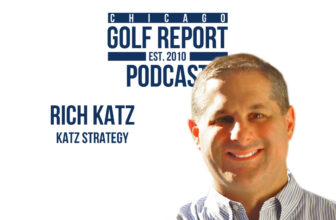
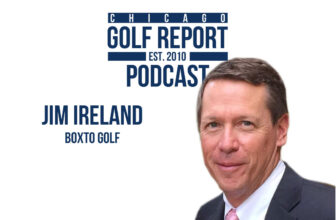
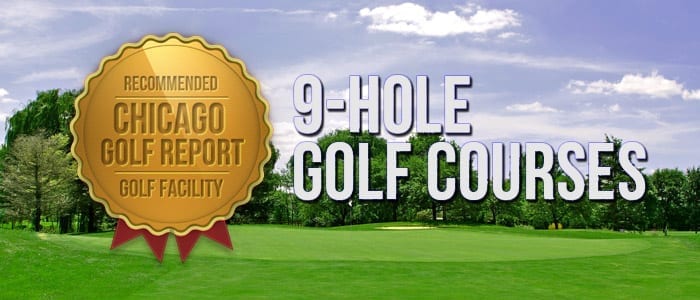
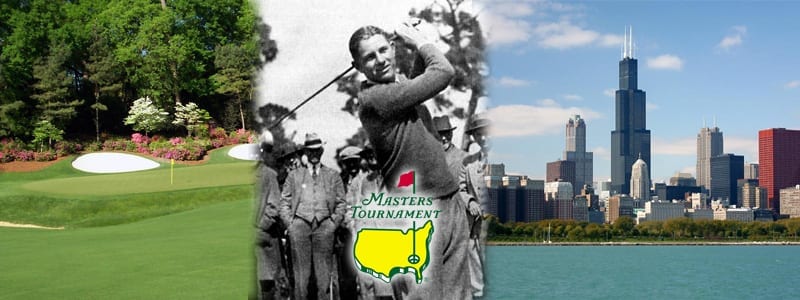

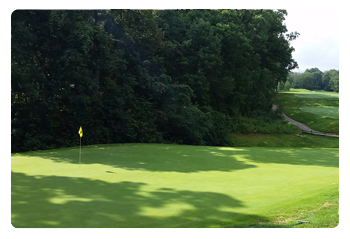 Find a Golf Course
Find a Golf Course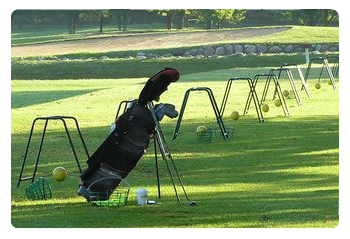 Find a Driving Range
Find a Driving Range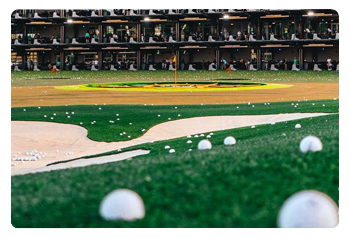 Find a Topgolf
Find a Topgolf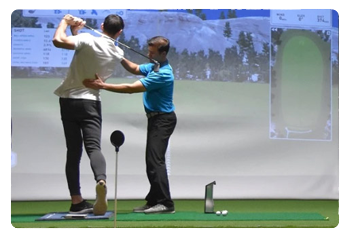 Find a Golf Instructor
Find a Golf Instructor